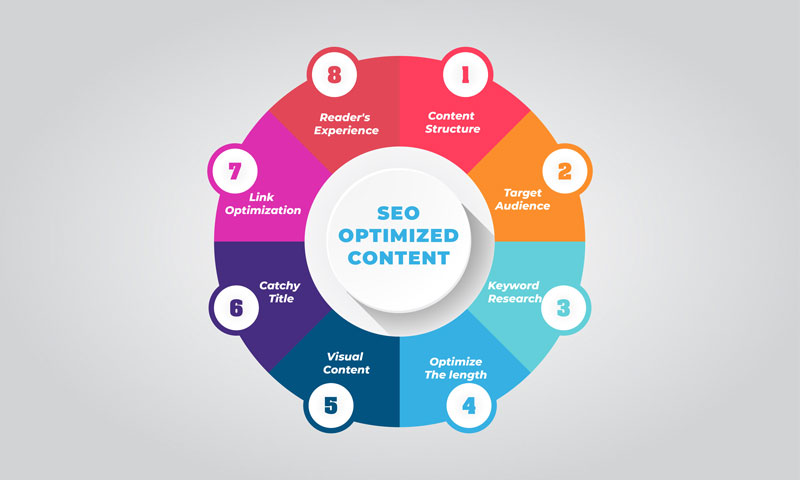In today’s digital landscape, Search Engine Optimization (SEO) plays a pivotal role in ensuring online content reaches its intended audience. With millions of articles, blog posts, and web pages competing for attention, optimizing content for search engines is no longer optional. Effective SEO not only enhances visibility but also improves user engagement, making it a critical skill for content writers.
This article delves into the importance of SEO in content writing and provides actionable tips to help writers optimize their content for better search engine rankings and user satisfaction.

Understanding SEO in Content Writing
What is SEO?
SEO, or Search Engine Optimization, refers to the strategies and techniques used to improve a website’s visibility on search engine results pages (SERPs). SEO encompasses three main components:
- On-Page SEO: Includes optimizing content, meta tags, and internal links.
- Off-Page SEO: Involves backlinks, social signals, and external endorsements.
- Technical SEO: Focuses on website structure, speed, and mobile-friendliness.
Why SEO Matters in Content Writing
For content writers, understanding SEO is essential because it:
- Boosts Organic Traffic: Optimized content ranks higher in SERPs, leading to increased visibility and clicks.
- Enhances User Experience: SEO strategies like clear headings and relevant keywords improve readability.
- Improves Search Rankings: Search engines reward content that aligns with user intent and best practices.
By aligning content with SEO principles, writers can ensure their work resonates with both readers and algorithms.

Key Elements of SEO-Optimized Content
Keywords and Keyword Research
Keywords are the foundation of SEO. They represent the terms users enter into search engines to find information. Conducting thorough keyword research helps writers identify high-ranking and relevant keywords. Tools like Google Keyword Planner, SEMrush, and Ahrefs can assist in discovering:
- Primary keywords that capture the main topic.
- Long-tail keywords that target specific user intents.
Incorporating keywords naturally into the content ensures better rankings without compromising readability.
Content Structure
Well-structured content not only enhances readability but also aids in SEO. Key components include:
- Headings and Subheadings: Using H1 for the title and H2, H3 for subtopics organizes content effectively.
- Short Paragraphs: Breaking down information into digestible sections improves user engagement.
- Bullet Points and Lists: Highlight key points for easy scanning by readers and search engines.
Meta Elements
Meta elements like titles and descriptions are the first things users see on SERPs. Crafting compelling and keyword-rich meta elements is crucial:
- Meta Title: A concise and descriptive title with the primary keyword.
- Meta Description: A summary that includes keywords and encourages clicks.
Quality and Relevance
High-quality, original content is the cornerstone of SEO. Search engines prioritize content that:
- Addresses user queries.
- Provides accurate and comprehensive information.
- Avoids duplication or plagiarism.
Internal and External Linking
Linking is essential for improving SEO:
- Internal Links: Guide users to other relevant pages on the website, enhancing navigation.
- External Links: Establish credibility by linking to authoritative sources.

Tips for Writing SEO-Friendly Content
Write for Humans First, Search Engines Second
While it’s important to optimize for search engines, content should prioritize the reader’s experience. Engaging, informative, and well-written content naturally performs better.
Optimize Images and Multimedia
Multimedia elements enhance user experience but must be optimized for SEO:
- Use descriptive file names and alt text for images.
- Compress images to improve page loading speed.
- Include captions and transcripts for videos and audio.
Mobile Optimization
With the majority of internet users accessing content via mobile devices, mobile optimization is non-negotiable. Writers should:
- Ensure content displays well on smaller screens.
- Use responsive design principles.
Leverage Long-Tail Keywords
Long-tail keywords, such as “how to write SEO-friendly blog posts,” target specific queries. They often face less competition and attract niche audiences.
Keep Up with SEO Trends
SEO is an ever-evolving field. Writers must stay informed about algorithm updates and user behavior changes to keep content relevant.
Common SEO Mistakes to Avoid
Overstuffing Keywords
Keyword stuffing not only harms readability but also risks penalties from search engines. Use keywords naturally and sparingly.
Ignoring Meta Elements
Neglecting to optimize meta titles and descriptions can result in missed opportunities for clicks and impressions.
Neglecting Mobile Users
Content that isn’t mobile-friendly alienates a significant portion of the audience.
Creating Thin or Duplicate Content
Search engines favor in-depth and original content over shallow or repetitive material.
Failing to Analyze Performance Metrics
Without tracking metrics, writers cannot gauge the success of their SEO efforts or identify areas for improvement.

Measuring the Success of SEO Content
Tracking and analyzing performance metrics is vital to understanding how well content performs. Useful tools include:
- Google Analytics: Provides insights into traffic, bounce rates, and user behavior.
- Ahrefs and SEMrush: Track keyword rankings and backlinks.
Key Metrics to Monitor
- Organic Traffic: Measures the number of visitors from search engines.
- Bounce Rate: Indicates how many users leave after viewing one page.
- Time on Page: Reflects content engagement levels.
- Backlinks: Shows how many external sites link to the content, enhancing credibility.
Conclusion
SEO is an indispensable part of content writing, bridging the gap between user needs and search engine algorithms. By understanding and implementing SEO best practices, writers can create content that not only ranks well but also provides value to readers.
Remember, SEO is an ongoing process that requires regular updates and adjustments. By integrating the tips shared in this article, writers can achieve greater visibility, engagement, and success in the digital space. Start optimizing today to unlock the full potential of your content!



